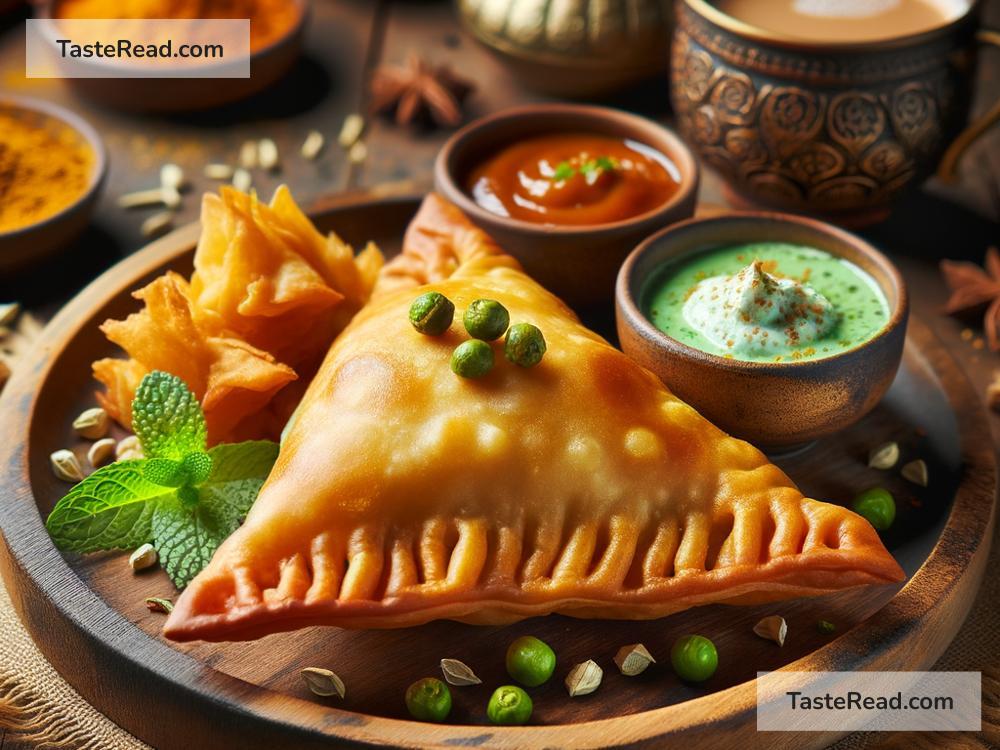The Development of the Indian Samosa: A Delicious Journey
The samosa is one of the most loved snacks in India and beyond. Whether it’s enjoyed as a tea-time treat, served at parties, or found roadside at food stalls, the samosa has become a truly iconic dish. But have you ever wondered where this crispy, triangular pastry came from? The history of the samosa is as rich and intriguing as its flavors. Let’s take a journey through time to trace the evolution of this delightful snack.
The Samosa’s Origins: Far from India
The samosa didn’t actually originate in India. Historians believe that it was first made in the Middle East around the 10th century. Back then, it was known as “samsa,” named after the pyramidal shape of the pastry, which resembled small triangular pyramids. These early samosas were stuffed with minced meat, nuts, and dried fruits. They were a favorite among traders and travelers because they were easy to carry and could stay fresh during long journeys.
From the Middle East, the idea of the samosa began to spread. It traveled to Central Asia, where the dish gained more popularity and evolved further. Thanks to trade and cultural exchanges, samosas eventually made their way to the Indian subcontinent during the 13th and 14th centuries, brought by merchants and traveling chefs.
The Samosa Finds a Home in India
When the samosa arrived in India, it underwent a delicious transformation. Indian cooks started experimenting with the dish, adapting it to suit local tastes and ingredients. Instead of meat and nuts, the filling was made with potatoes, peas, spices, and herbs—ingredients that were plentiful in India. This vegetarian version quickly became popular, and over time, different regions of India began to create their own versions of the samosa.
Indian spices played a key role in giving the samosa its distinctive flavor. Cumin, coriander, turmeric, chili, and garam masala turned the simple pastry into a mouth-watering delight. The crispy outer layer, made from deep-fried flour dough, provided the perfect contrast to the soft, flavorful filling inside.
By the time the Mughal Empire rose to power, the samosa had become a favorite snack among royalty and commoners alike. It was served at feasts, celebrations, and gatherings, solidifying its place in Indian culinary tradition.
Regional Variations of the Samosa
One of the most interesting things about the samosa is how it changes from region to region. In northern India, the typical samosa is stuffed with a spicy mixture of potatoes, peas, and sometimes nuts. In western India, especially in Gujarat, samosas are smaller and often sweeter, with fillings like coconut, dried fruits, and sugar. In the southern states, samosas may include fillings inspired by local flavors, such as curry leaves and black mustard seeds.
Beyond India, samosas have also taken on unique forms. In neighboring countries like Pakistan, Bangladesh, and Nepal, samosas are often a beloved street food, but the fillings and spices may differ slightly. Burmese samosas even come with noodles inside, creating an entirely new twist on this beloved snack.
The Samosa Goes Global
As Indian communities settled around the world, the samosa went with them. Today, samosas are not just found in India but are enjoyed globally. In the UK, for example, Indian restaurants serve samosas as popular appetizers. In East Africa, Indian migrants introduced samosas, which were adapted with local flavors and became staples in countries like Kenya and Tanzania.
Even Western chefs have begun experimenting with samosas, filling them with non-traditional ingredients like cheese, chocolate, or exotic meats. Fusion samosas are now a trendy snack, blending Indian culinary traditions with global influences.
Why Do We Love the Samosa?
The samosa’s widespread appeal comes down to its versatility. It can be savory or sweet, spicy or mild—it’s a blank canvas for creativity. Its portability and convenience also make it a favorite snack for people on the go. Additionally, the familiar crunch and comforting filling evoke feelings of warmth and satisfaction.
But more than anything, the samosa is a symbol of cultural connection. Its journey from the Middle East to India and the rest of the world represents the beauty of globalization and the way food can bring people together.
Looking Ahead: The Samosa in Modern Times
Today, samosas continue to evolve. Fast-food restaurants serve samosas alongside burgers and pizzas, while high-end chefs experiment with gourmet versions of the dish. Frozen samosas are widely available in supermarkets, making it easy to enjoy this iconic snack at home. Food delivery apps allow people to order samosas from their favorite restaurants with just a few clicks.
The humble samosa has come a long way from its origins as a traveler’s snack. Whether stuffed with potatoes and peas in India, filled with meat and spices in the Middle East, or reinvented in trendy new ways, the samosa remains a timeless favorite. Its story reminds us of how food travels across cultures and generations, adapting yet staying true to its original essence.
So the next time you bite into a warm, crispy samosa, take a moment to appreciate the history behind it. This little pastry carries with it centuries of tradition, flavor, and connection, making it much more than just a snack. It’s a story, a journey, and a piece of culinary art—all wrapped up in golden, flaky goodness.


